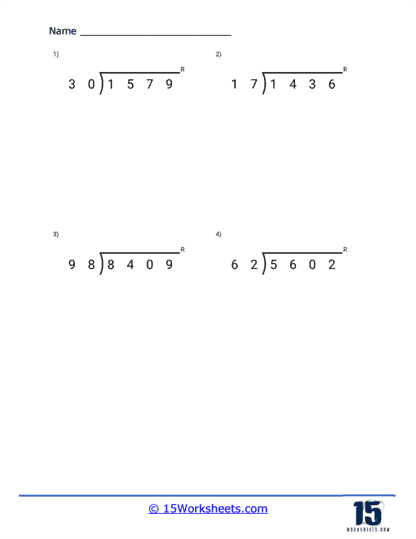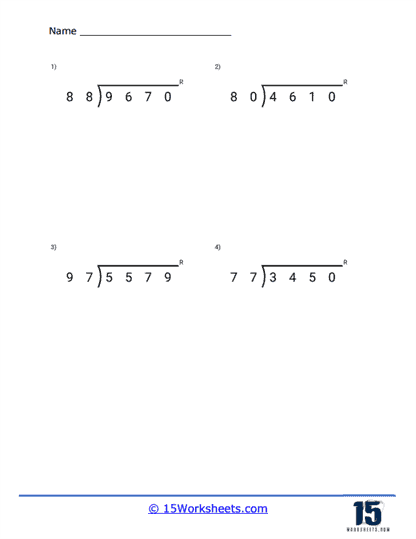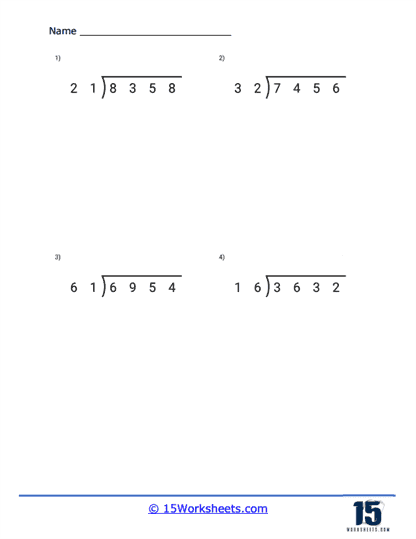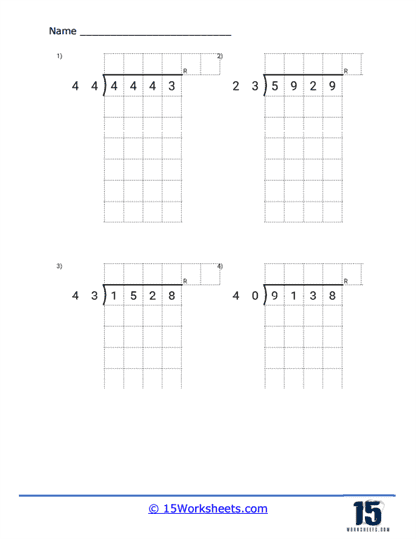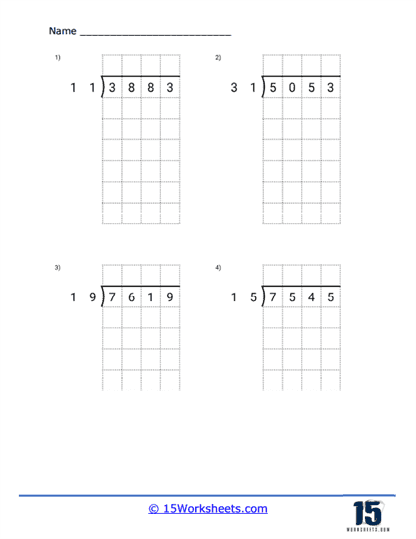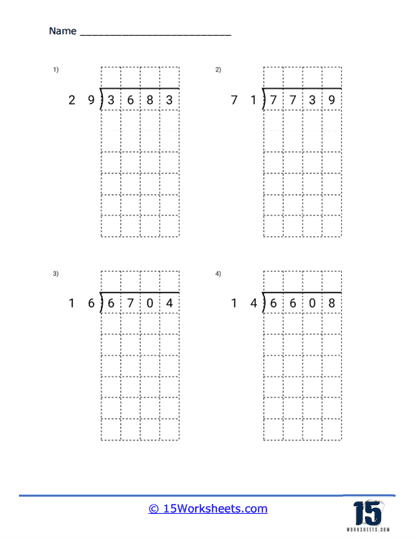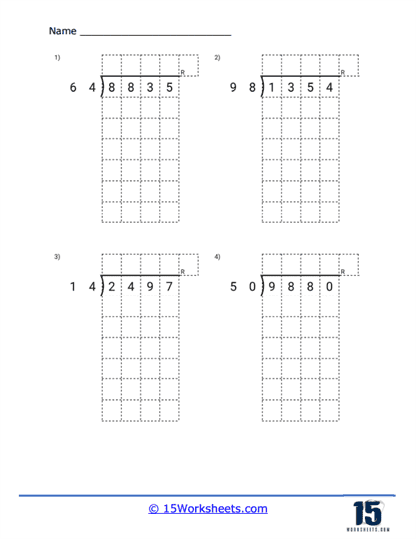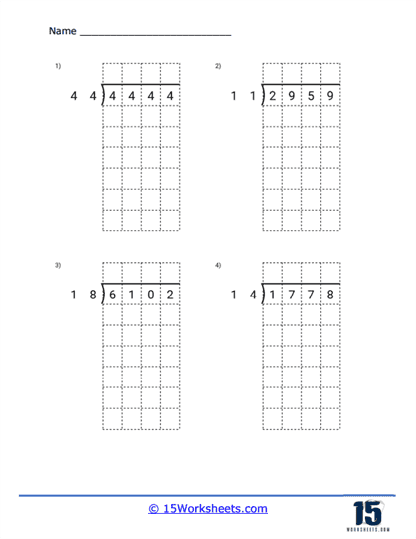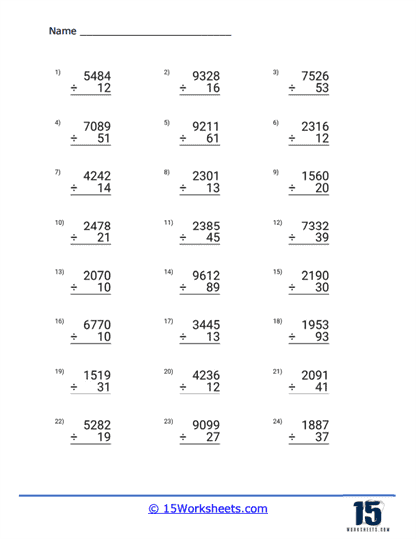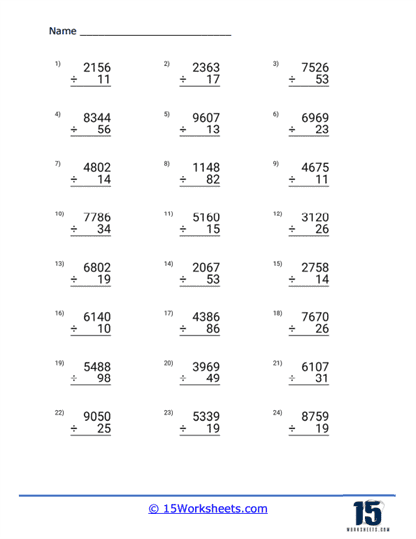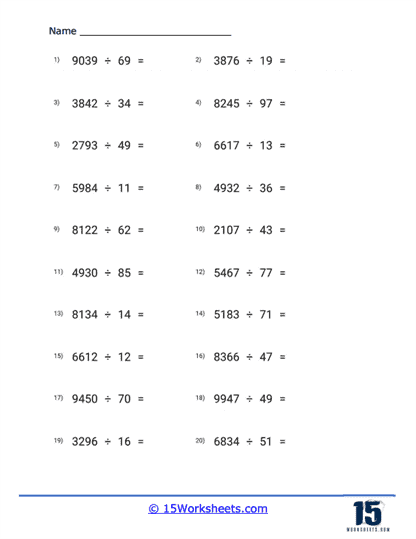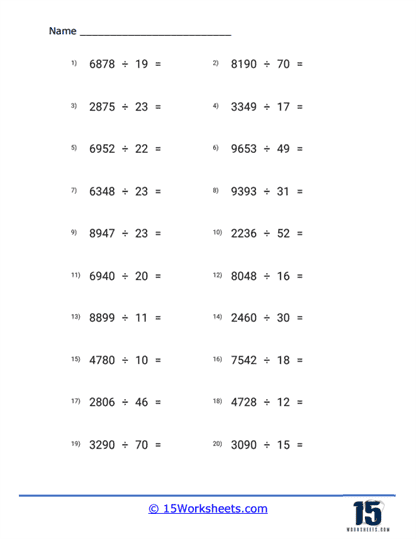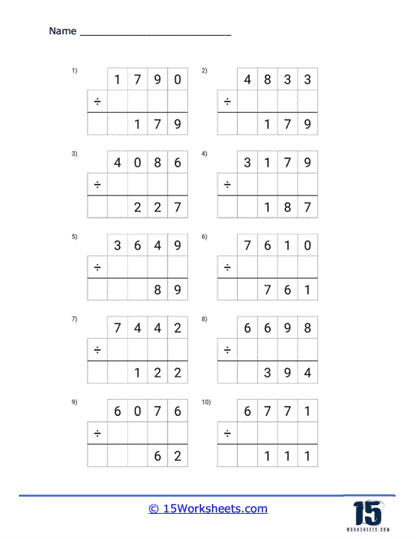4-digit by 2-digit Division Worksheets
About These 15 Worksheets
These complex division worksheets are used to help primary level students learn how to divide a 4-digit number (the dividend) by a 2-digit number (the divisor). These worksheets are specially designed to improve your division skills by offering a variety of problems where the divisor (the number you’re dividing by) is a two-digit number, and the dividend (the number you’re dividing) is a four-digit number.
Before you can comfortably solve these problems, there are some foundational skills you should already have mastered. Firstly, you need to understand the concept of division and how it relates to multiplication – essentially, division is the inverse of multiplication. If you multiply 4 by 2 to get 8, you can divide 8 by 2 to get back to 4.
You should also be able to perform simple one-digit division problems. For example, you should know that 8 divided by 2 equals 4 without having to work it out. It’s also important that you understand the terms used in division. In the division problem 8800 ÷ 40, 8800 is the dividend (the number being divided), 40 is the divisor (the number doing the dividing), and the answer you get is the quotient.
Knowledge of place value is critical as well. In a four-digit number, there are units (or ones), tens, hundreds, and thousands. For example, in the number 4567, ‘4’ stands for four thousand, ‘5’ stands for five hundred, ‘6’ stands for sixty (or six tens), and ‘7’ stands for seven ones.
Lastly, you should be able to do subtraction and multiplication of multi-digit numbers since these operations are frequently used when dividing larger numbers.
The Benefits
Our 4-digit by 2-digit division worksheets provide a structured platform to learn and master the skill of long division, one of the key mathematical operations. They guide you step-by-step through the division process, providing you with an opportunity to practice at your own pace, and help you understand how division works with larger numbers.
These worksheets enhance your critical thinking and problem-solving skills. Long division requires you to make decisions at each step. You have to estimate how many times the divisor can go into the dividend at each step, multiply the divisor by your estimate, and subtract that product from the dividend. This whole process needs careful thinking and planning.
Working on these worksheets can also boost your number sense. You become more familiar with how numbers relate to each other, and how changing one number in a multiplication or subtraction problem affects the result. As you divide larger numbers, you’ll gain a better understanding of the magnitude and relationships between numbers.
Practicing with these worksheets improves your multiplication and subtraction skills as well. Each step of the long division process involves these operations. You’ll be multiplying to find the product of the divisor and your estimate, and then subtracting that product from the dividend.
In addition, these worksheets can help you develop perseverance. Long division problems require multiple steps and some time to solve, especially when you’re first learning. Sticking with the problem until you find the solution can help build your determination and persistence.
Finally, consistency in practicing with these worksheets helps in building speed and accuracy. Over time, as you become more comfortable with the process, you’ll find that you can solve the problems faster and make fewer mistakes.

